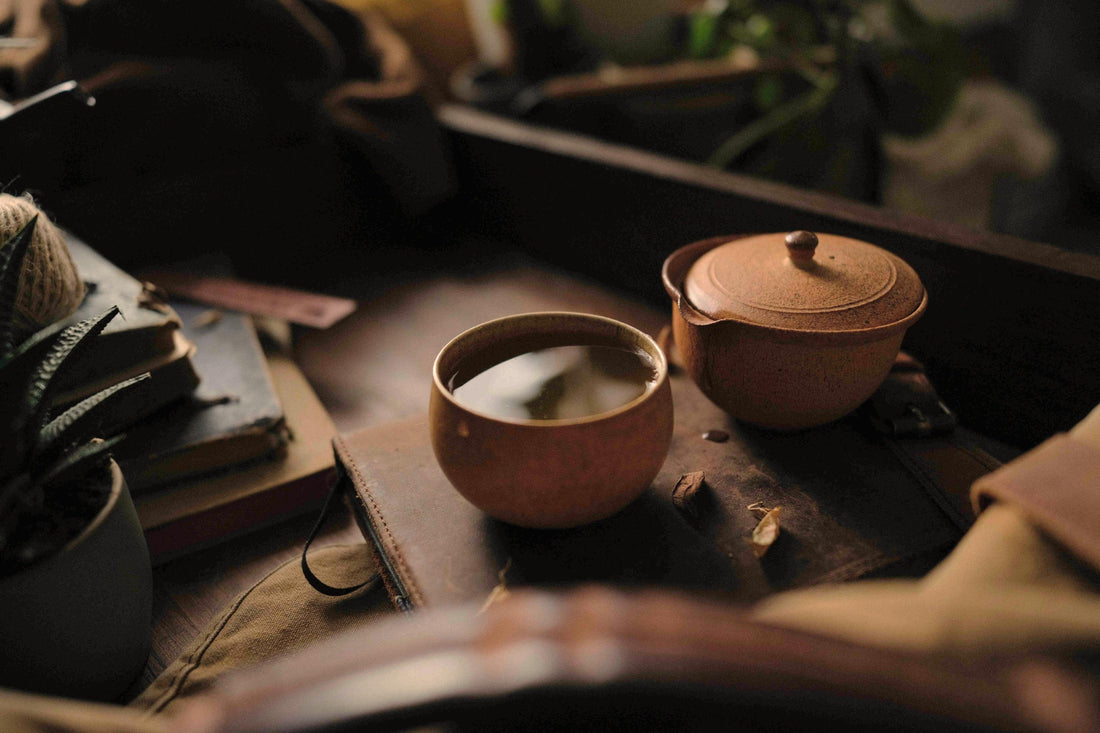
From White to Pu-erh: A Beginner's Guide to the Types of Tea
Welcome, tea adventurer, to the wonderful world of tea with 23 Gardens! If you're new to tea or looking to expand your horizons, understanding the main types of tea is the perfect place to start. You might be surprised to learn that the vast spectrum – from delicate White Tea to complex Pu-erh – all originate from one amazing plant: Camellia sinensis.
So, what creates the incredible variety in flavour, colour, and aroma? The secret lies in the leaf's journey after harvest, specifically the tea processing method and the level of oxidation (exposure to air). This beginner's guide to tea will walk you through the six fundamental tea categories.
At 23 Gardens, we celebrate the unique character of each tea. Let's explore these fascinating types together.
1. White Tea: Understanding the Most Delicate Tea Type
- What is it? The least processed tea type, often using young buds and leaves. Minimal handling involving withering and drying preserves its subtlety.
- The Experience: Expect delicate, nuanced flavours – think hints of floral sweetness or light fruitiness. White tea is naturally low in caffeine and offers a gentle introduction to Camellia sinensis.
- Think of it as: Pure, gentle, early-morning light.
- Brewing Tip: Use cooler water (75-85°C / 167-185°F) for optimal flavour.
2. Green Tea: Freshness Preserved Through Processing
- What is it? Oxidation is halted early in green tea processing via heat (steaming or pan-firing). This "kill-green" step locks in the fresh, vibrant character and green colour.
- The Experience: A refreshing burst! Flavours range from grassy and vegetal (common in Japanese green teas) to mildly toasted or nutty (often found in Chinese varieties). It's a popular choice among types of tea for its lively taste.
- Think of it as: A vibrant spring meadow.
- Brewing Tip: Use water below boiling (80-85°C / 176-185°F) to avoid bitterness.
Discover Our Green Tea Selection
3. Yellow Tea: A Rare and Mellow Tea Category
- What is it? A unique and rare tea category. After initial heating, a special slow, damp oxidation or "smothering" step (men huan) creates exceptional smoothness.
- The Experience: Mellow, smooth, often sweet notes without green tea's grassiness. A truly unique profile within the types of tea.
- Think of it as: A soft, golden, hazy afternoon.
- Brewing Tip: Handle gently, brew similarly to green tea (around 80-85°C).
4. Oolong Tea: The Diverse World of Partial Oxidation
- What is it? Oolong teas showcase the art of partial tea oxidation, sitting between green and black teas. Oxidation levels vary widely (lightly oxidised ~10% to heavily oxidised ~80%), resulting in a huge range of flavours.
- The Experience: The most diverse tea category! Lighter oolongs offer floral notes, while darker ones bring roasted, fruity, or honeyed characteristics. A fascinating exploration of tea processing artistry.
- Think of it as: An intricate dance between green and black tea characteristics.
- Brewing Tip: Water temperature varies; cooler (85-95°C) for light oolongs, near-boiling (95-100°C) for dark ones. Excellent for multiple infusions.
5. Black Tea: Fully Oxidized Boldness
- What is it? This popular type of tea undergoes full oxidation. Leaves are withered, rolled/cut to encourage oxidation, then dried. (Often called "Red Tea" / hong cha in China).
- The Experience: Robust, full-bodied flavours. Profiles range from malty and brisk (Breakfast Blends) to complex notes of fruit, wine, or cocoa (Keemun). A staple in many cultures.
- Think of it as: A comforting, reliable, warm embrace.
- Brewing Tip: Use fully boiling water (100°C / 212°F). Many black teas pair well with milk or sugar.
View Our Collection of Black Teas
6. Pu-erh Tea: The Art of Post-Fermented Tea
- What is it? Unlike other tea categories defined by oxidation, Pu-erh is a post-fermented tea (microbial activity over time), mainly from Yunnan, China. It exists as Sheng (raw, ages naturally) or Shou (ripe, accelerated fermentation). Often sold in compressed forms.
- The Experience: Deep, earthy, smooth, and complex. Flavours evolve with age, ranging from camphor and forest floor to dark fruit and sweetness. Known for its unique character and digestive properties.
- Think of it as: Aged wisdom; like stepping into an ancient library or rich forest.
- Brewing Tip: Rinse leaves briefly with boiling water first. Use boiling water (100°C / 212°F) and explore flavour changes over multiple steeps.
Your Guide to Exploring Tea Types
Understanding tea oxidation and processing helps unlock the secrets behind the distinct types of tea from the versatile Camellia sinensis plant. From the lightest White to the deepest Pu-erh, each category offers a unique sensory experience.
Ready to start your exploration? The best type of tea is the one you enjoy most. We invite you to browse the curated tea categories at 23 Gardens and discover your personal favourites.
Happy sipping on your tea journey!
